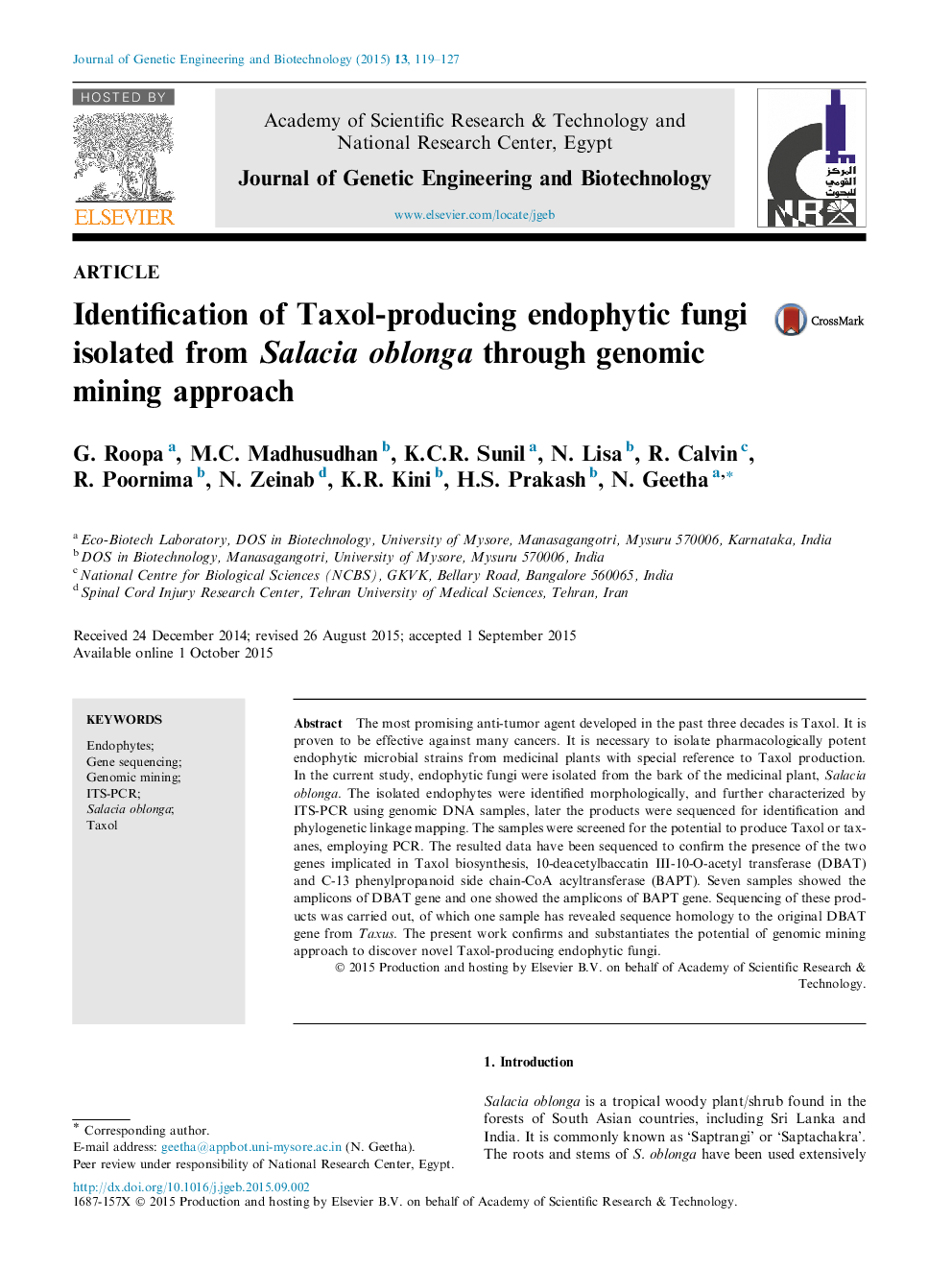| Article ID | Journal | Published Year | Pages | File Type |
|---|---|---|---|---|
| 2087860 | Journal of Genetic Engineering and Biotechnology | 2015 | 9 Pages |
The most promising anti-tumor agent developed in the past three decades is Taxol. It is proven to be effective against many cancers. It is necessary to isolate pharmacologically potent endophytic microbial strains from medicinal plants with special reference to Taxol production. In the current study, endophytic fungi were isolated from the bark of the medicinal plant, Salacia oblonga. The isolated endophytes were identified morphologically, and further characterized by ITS-PCR using genomic DNA samples, later the products were sequenced for identification and phylogenetic linkage mapping. The samples were screened for the potential to produce Taxol or taxanes, employing PCR. The resulted data have been sequenced to confirm the presence of the two genes implicated in Taxol biosynthesis, 10-deacetylbaccatin III-10-O-acetyl transferase (DBAT) and C-13 phenylpropanoid side chain-CoA acyltransferase (BAPT). Seven samples showed the amplicons of DBAT gene and one showed the amplicons of BAPT gene. Sequencing of these products was carried out, of which one sample has revealed sequence homology to the original DBAT gene from Taxus. The present work confirms and substantiates the potential of genomic mining approach to discover novel Taxol-producing endophytic fungi.
